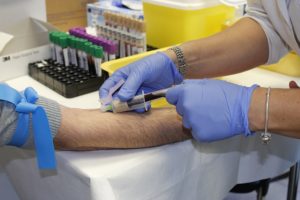
Erectile dysfunction is a serious sexual condition in men. Clinically, this condition is described as the persistent or recurrent inability to achieve and maintain an erection for a period long enough to ensure sexual satisfaction. As expected, men who suffer from this condition find it hard to have a normal sexual life as intercourse is difficult without an erect penis. Culturally, this condition is discriminated against, explaining why only a few patients willingly present to the hospital for medical treatment of erectile dysfunction. Some patients are simply not comfortable with discussing this subject in a doctor’s appointment session.
As far back as 1995, the global burden of erectile dysfunction was estimated at 150 million men. By 2025, this number is projected to reach 320 million. Currently, erectile dysfunction affects approximately 15% of men annually. Many clinical reviews and epidemiological studies have suggested that more than 50% of the total men population above 40 years will have erectile dysfunction at a point in their lifetime. Although studies on the regional burden of erectile dysfunction are scarce, there are many indications of a rapidly increased global burden even before 2025.
In all its presenting forms, erectile dysfunction generally reduces the rate of blood infilling into the penile blood vessels. Vascular abnormalities of the penile blood vessels and neighboring vessels are considered a leading cause of erectile dysfunction. There are much research evidences linking erectile dysfunction with risky social behaviors in men. Smoking and obesity are the most studied social factor increasing the risk of erectile dysfunction in males of different age groups. In addition to complicating any underlying conditions and comorbidities, smoking has been proven to significantly contribute to the onset of erectile dysfunction.
Research data linking smoking and erectile dysfunction
There is an overwhelming volume of clinical research data linking smoking with the onset of erectile dysfunction. An early report published by the Journal of Urology suggests that there are strong shared risks among smoking, erectile dysfunction, atherosclerosis, and coronary dysfunction in males. This evidence-based analysis also confirms that the association of erectile dysfunction with underlying medical condition appears to be amplified by smoking. This submission confirms the results of subsequent clinical studies suggesting that smoking may affect penile erection by impairing endothelium-dependent smooth muscle relaxation.
In 2016, the Sexual Medicine Reviews published the result of a review study focused on male sexual function and smoking. By analyzing and reviewing peer-reviewed literature on the association between smoking and erectile dysfunction, the researchers concluded that there is substantial clinical evidence implicating smoking in the onset of erectile dysfunction. Data analysis of the dose-response relation suggests that the risk of erectile dysfunction in smokers increases proportionally with a prolonged smoking duration.
Smoking cessation has also been proven to improve the prognosis of erectile dysfunction in the case where only limited smoking exposure exists. With prolonged exposure to smoking, the processes involved with penile blood vessel infilling is affected. This explains the observation that erectile dysfunction affects many stages of the erection physiology in smokers when compared with non-smokers. Considering the fact that smoking is a leading factor in many cardiovascular diseases, it is safe to conclude that smoking increases the risk of erectile dysfunctions in males.
How smoking can cause erectile dysfunction in males
Biologically, an alteration in the stepwise process involved in penile erection –desire, erection, ejaculation, and detumescence –generally results in erectile dysfunction. To explain how smoking causes erectile dysfunction, many researchers have studied the adverse effect of smoking on the different stages of penile erection.
The most widely reported mechanism by which smoking causes erectile dysfunction is its effect on Nitric oxide (NO) –a neuronal chemical believed to be responsible for inducing erection in males. Cigarette smoke negatively affects the level of NO in the body –an action that directly mediates difficulty in penile erection. A 2016 publication of the Andrologia explained the molecular mechanism associating smoking with erectile dysfunction. Components of the burned tobacco are responsible for a dose-dependent loss of neuronal NO through the enzymatic blockade.
Beyond merely causing the loss of neuronal NO, components of tobacco smoke have also been proven to reduce the neuronal activity of NO. On a molecular level, this effect negatively affects the neurons responsible for transmitting the erection stimulus. It is a long-known fact that tobacco smoke can also damage the vascular endothelium in habitual smokers. The processes of penile erection rest heavily on blood flow in healthy vessels of the penile vessels.
Smoking causes intrinsic damages to the penile vessels and blocks the paracrine signal for elastic dilation. This vessel damage messes up the relaxation of the cavernous smooth muscles and the trapping of blood within the erectile tissues. As long as the erectile tissues are not engorged with blood, it becomes difficult to achieve an erection or maintain an erection for a long period. A transient erection is weak and cannot be enough to achieve sexual satisfaction.
Online doctor ED treatment
Erectile dysfunction (ED) is a sensitive health problem, and many patients prefer a personal home therapy plan as a treatment option. Online doctor ED treatments are cheap and can be easily assessed within the comfort of the patient’s home. An online doctor can make an expert diagnosis of erectile dysfunction after a consultation session online. Laboratory investigations might be ordered to understand if an underlying medical condition is directly responsible for the inability to achieve penile erection.
On formulating a therapy plan, an online doctor can also issue an online prescription for erectile dysfunction. Home therapy for erectile dysfunction is effective, especially with complete adherence to the medication regimen. To track therapy progress in the treatment of erectile dysfunction, many online doctor services have designed a therapy monitoring plan. Patients can report treatment progress during real-time communication sessions with an online doctor. This also helps the doctor to review the therapy plan and modify the online prescription, if necessary. By combining oral medications with an addiction therapy plan aimed at quitting smoking, an online doctor service can effectively treat erectile dysfunction caused by long exposure to smoking.
References:
- https://pubmed.ncbi.nlm.nih.gov/11586190/
- https://www.ncbi.nlm.nih.gov/pmc/articles/PMC4485976/#!po=9.18367
- https://www.emro.who.int/emhj-volume-17/volume-17-issue-7/article6.html
- https://www.ncbi.nlm.nih.gov/pmc/articles/PMC2563576/
- https://pubmed.ncbi.nlm.nih.gov/27872030/
John Davis is a seasoned health journalist with expertise in public health and medical research. Holding a degree in health sciences, John excels in making complex health topics understandable and engaging for his readers. His articles, featured in top health publications, cover everything from cutting-edge treatments to public health policies. Outside of journalism, John is an advocate for health education and frequently speaks at community events.





